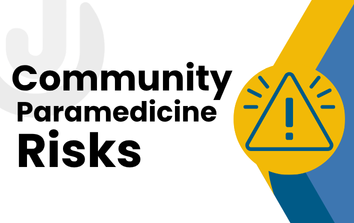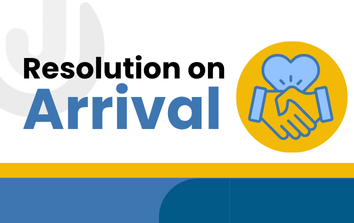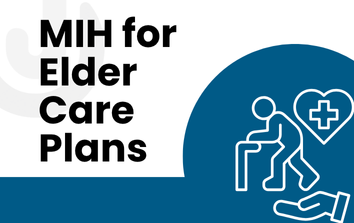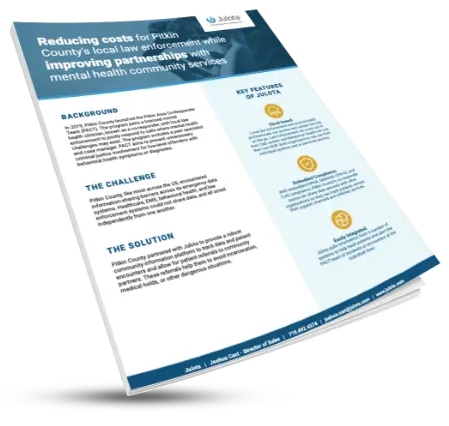In recent years, communities have been turning toward police and social worker partnerships as a promising solution. These partnerships pair sworn officers with trained social workers to handle crises together, striking a balance between enforcement and care. The goal is simple but powerful: keep people safe while connecting them to the services they need.
Why Police and Social Worker Partnerships Are Emerging
The model gained traction as communities recognized three significant challenges:
- Mental Health & Addiction Crises Rising
Roughly one in five adults in the U.S. experiences mental illness each year, and substance use disorders continue to fuel overdose deaths. Traditional policing approaches have struggled to address these challenges effectively. - Overreliance on the Criminal Justice System
For decades, people in crisis have been funnelled into jails instead of treatment programs. This often worsens the underlying issues while straining courts, correctional facilities, and taxpayers. - Community Trust in Law Enforcement
Incidents of excessive force and misaligned crisis responses have eroded public trust. Residents increasingly call for models that prioritize de-escalation and compassion.
Against this backdrop, police and social worker partnerships have emerged as a bridge between enforcement and social services, creating responses that are safer, more humane, and more cost-effective.
Case Study: Camden’s Village Initiative
In Camden, New Jersey, the Village Initiative represents one of the most innovative examples. Since launching in 2020, the program has paired Camden County officers with social workers from the Center for Family Services.
Together, they respond not only to emergency calls but also proactively engage with residents struggling with homelessness, addiction, and poverty. Outreach is continuous and persistent—sometimes offering supplies and resources, and at other times, transporting individuals directly to treatment centers or housing.
The results are striking: Camden reported a 37% drop in fatal overdoses in the first half of 2025 compared to the same period in 2024. For a city battling overlapping challenges of poverty, addiction, and housing insecurity, that’s a life-saving shift.
Other Cities Pioneering the Model
Camden is not alone. Across the United States, variations of this model are taking hold:
- CAHOOTS (Crisis Assistance Helping Out On The Streets) – Eugene, Oregon
Operating since 1989, CAHOOTS dispatches teams of medics and crisis workers instead of police for many nonviolent calls. It handles up to 20% of 911 calls in Eugene, demonstrating the effectiveness of non-police-led responses. - Denver STAR Program (Support Team Assisted Response)
Launched in 2020, STAR dispatches mental health clinicians and paramedics to select crisis calls without involving the police. A 2022 study showed STAR reduced low-level crime reports by 34% in its service areas. - NYC B-HEARD (Behavioral Health Emergency Assistance Response Division)
New York City’s pilot program dispatches teams of EMTs and mental health professionals to behavioral health crises. Early results show individuals are more likely to accept help when responders are non-police professionals.
These programs vary in structure, but the theme remains consistent: crisis intervention works more effectively when public safety and social services collaborate.
Benefits of Police and Social Worker Partnerships
The advantages of these collaborations extend beyond single success stories:
- Crisis De-escalation
Social workers bring skills in trauma-informed care, motivational interviewing, and de-escalation—reducing the risk of force being used. - Reduction in Unnecessary Arrests
Instead of jailing someone for disorderly conduct linked to mental illness or addiction, individuals can be redirected into treatment. - Cost Savings
Incarceration and emergency room visits are expensive. Studies show crisis intervention programs save municipalities millions by reducing repeat arrests and ER admissions. - Stronger Community Relationships
When residents see that officers are showing up with helpers—not just handcuffs—it builds trust and legitimacy. - Officer Relief
Police are freed from handling situations they aren’t fully trained for, allowing them to focus on crime prevention and public safety.
Challenges and Barriers to Scaling
While promising, these partnerships face hurdles:
- Training & Cultural Integration: Police and social workers come from different professional cultures. Training and cross-agency collaboration are vital for trust.
- Funding & Sustainability: Pilots often rely on grants; long-term adoption requires dedicated funding streams.
- Dispatch Protocols: Deciding when to send co-response teams vs. alternative responders remains a work in progress.
- Data Sharing: Agencies must navigate privacy laws while ensuring that information flows quickly enough to connect individuals to the services they need.
Julota’s Role in Supporting Partnerships
A critical but less visible piece of these partnerships is technology and data interoperability. That’s where platforms like Julota play a role. By enabling law enforcement, social workers, hospitals, and community-based organizations to share information securely, Julota helps teams:
- Identify individuals who need follow-up after a crisis.
- Track service referrals and outcomes.
- Reduce duplication of effort across agencies.
- Measure the long-term impact of co-response models.
Technology ensures these partnerships are not just compassionate but also accountable and scalable.
Looking Ahead: The Future of Public Safety
The momentum behind police and social worker partnerships is growing. Cities across the U.S. are piloting, expanding, or institutionalizing co-response and alternative response models. Policymakers are also taking note, as data increasingly shows these programs improve outcomes while lowering costs.
In the future, we can expect:
- Wider integration of health and social care providers into emergency response.
- Expanded training so more officers understand trauma-informed practices.
- Stronger federal and state funding to sustain these models.
- Continued innovation in technology platforms to ensure agencies work as one team.
Conclusion
The evidence is mounting: police and social worker partnerships save lives, reduce unnecessary arrests, and restore trust between communities and law enforcement. Camden’s Village Initiative, Denver’s STAR program, and Eugene’s CAHOOTS all demonstrate that when enforcement is paired with compassion, everyone benefits.
As more cities adopt this model, the future of public safety may look very different from the past: less about punishment, more about problem-solving. With the right partnerships, training, and tools, communities can create a system that is safer, fairer, and more humane.




